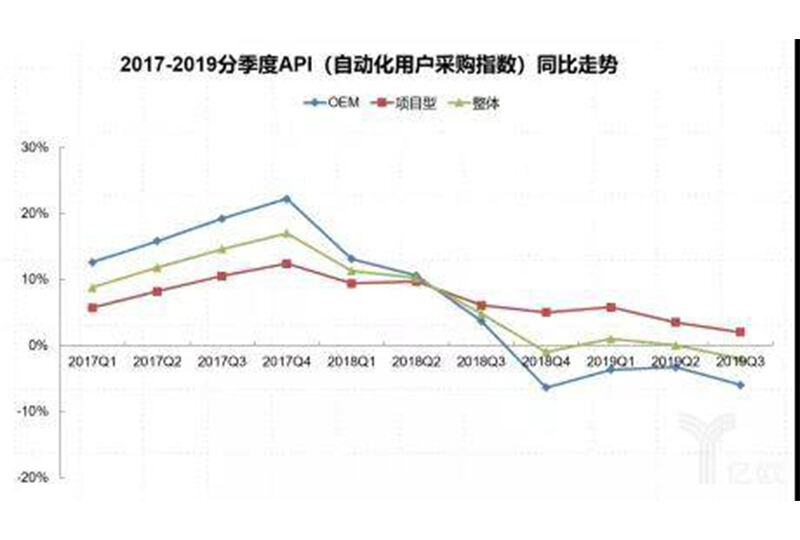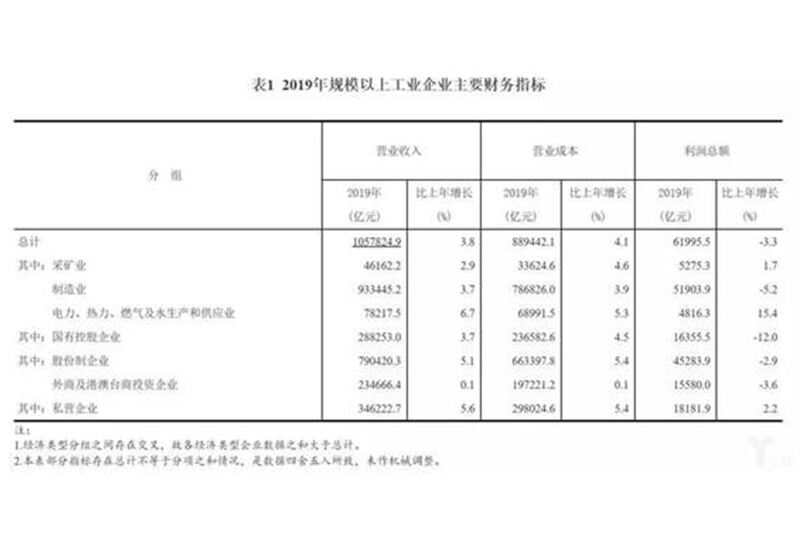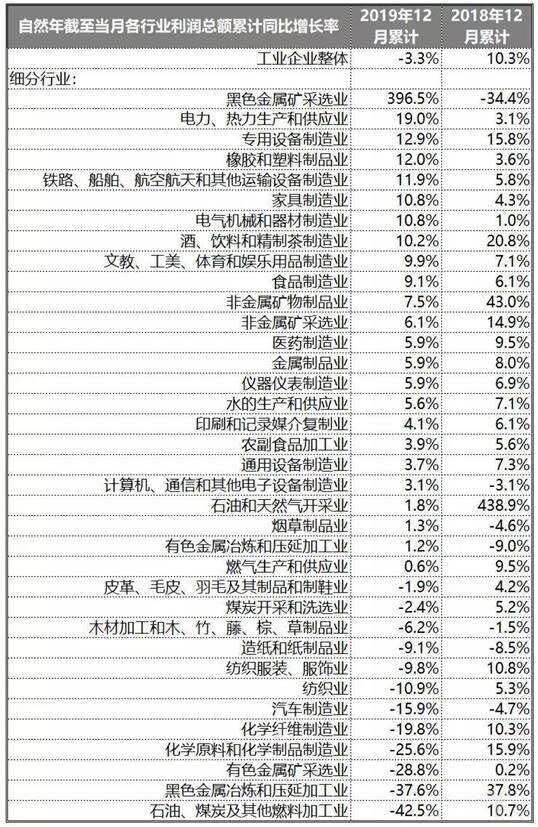In recent years, under the guidance of industrial structure optimization policies, China's industrial structure has gradually become more reasonable, and the driving effect of new drivers has gradually emerged. Although 2019 experienced negative effects such as the trade war, with the end of the year to stabilize, the industry is still full of expectations for the recovery of the market in 2020.
However, an epidemic in the beginning of 2020 has disrupted the established rhythm of almost all industries, and the field of industrial automation is no exception. In the last part, we mentioned that although the short-term disturbance of the epidemic, we believe that the overall market of automation may still slow down before rising, and we will analyze the future trend of different industries under the impact of the epidemic from the perspective of the industry.

Review: In 2019, bottom energy storage and stabilization ended
Let's take a look at gongkong Research's dynamic index data. In 2019, the OEM market was still operating in the bottom range, and the project market, which had performed relatively well before, also began to enter a slow downward channel in the second half of the year. In the industrial automation market in 2019, the automation market in the PA field is better than that in the FA field as a whole. Petrochemical, metallurgy, construction machinery and other industries performed better, leading the market. In contrast, the demand for automation in the electronics, automotive, thermal power, machine tools and other industries is still hovering at the bottom. However, according to our latest data collection, the overall market is expected to stabilize in the fourth quarter of 2019.

Data source: gongkong Research
We look at the industry fundamentals, from the 2019 macro data released by the National Bureau of Statistics, it is not difficult to find that among all industrial industries, the profitability of the manufacturing industry is the most worrying.

Source: National Bureau of Statistics
We then compare the profit situation of some sub-sectors (select industries with relatively high correlation with the industrial automation market).

Source: National Bureau of Statistics
Through the comparison of two years, we can see that the profit growth of some more traditional process industries (or upstream industries of the industrial chain) and the automotive industry has a downward trend, and the profit of some livelihood related light industry fields (except textiles) has maintained relatively stable growth. Ignoring the influence of policy factors, special events and non-main business conditions, the company's own profit changes will largely affect the future production line end intelligent manufacturing or automation system investment. Of course, corporate profitability pressure and forced production line upgrades also exist. Therefore, we can predict through the industry fundamentals that the project market with better performance in recent years will turn into a slow downward channel, while the OEM market with sluggish performance in recent years is expected to bottom out and rebound.
Outlook: In 2020, the first half of the snow storm, looking forward to the second half of the spring flowers
However, after the outbreak began in January, almost all industries were put under a state of emergency. Consumption stagnated, factories stopped working, project approvals and construction were suspended, banks began to worry about bad debts, capital rushed to safety and governments scrambled to fight the pandemic. For manufacturing enterprises, negative factors such as capital, employees, raw material supply, contract delivery, and customer loss hit almost all at the same time. As the epidemic continues, the plight of small and medium-sized enterprises is further worsening.
Although local governments are also aware of the seriousness of the problem and actively introduce relevant policies to help enterprises, it takes a cycle for policy formulation to be implemented, and it is difficult to reverse the pessimistic sentiment of the market in the first half of the year.
Therefore, we have to revise the original "stop the decline and stabilize" may even usher in the market "light spring" judgment, affected by the epidemic, automation market demand in the first quarter of 2020 will suffer "worse" or "reverse cold", the whole first half of the year may also decline further, The short-term suppression of demand in the first quarter and the later policy dividend may lead to the recovery of the market in the second half of the year. At the same time, we have revised the market judgment of different industries as follows:
PA area: The automation market is running smoothly
In the process automation market such as metallurgy, petrochemical, chemical, electric power, building materials, and municipal, although the epidemic has caused a certain impact on the project start cycle, the impact may be smaller than other industries at present. The sudden outbreak of the epidemic in 2020 May cause the backlog of automation demand in the PA field in the first half of the year to be released at the later stage. In the long run, after the epidemic, the remote diagnosis and operation of production line equipment in these industries may be more clear, and the digital demands of enterprise operations may be more clear. The solutions to many problems that previously plagued enterprises, such as operational effectiveness evaluation, architectural foundation problems, information interaction islands, and security, may also be clearer.
FA area: The automation market is under great pressure
Electronic manufacturing equipment, textile and garment equipment, food and beverage packaging equipment, machine tool equipment and other equipment manufacturing industries have been affected by the epidemic. Most of their downstream small and medium-sized enterprises are the most severely affected consumer manufacturing enterprises. Most of these industries are concentrated in eastern and Central China, which are also the hardest hit areas of the epidemic, and the demand for automation will also face pressure in the short term. With the improvement of the epidemic situation, it is expected to recover steadily in the second half of the year. In addition, after the epidemic, for industries that are still heavily dependent on labor or in the process of upgrading, how to improve equipment intelligence/flexibility, improve the industrial Internet architecture and other issues will gradually be paid attention to by the enterprise side.
Emerging fields: Automation + information is ready for development
At the same time, we also see emerging areas that may accelerate after the epidemic, such as medicine/medical equipment, smart hospitals, smart logistics, smart cities, smart agriculture, smart transportation, smart buildings/security, new infrastructure, and so on will face new opportunities. For the automation market, the current power of emerging industries is not enough to leverage the automation market in the short term, and the long-term potential is huge. The trend of man-machine integration, soft and hard integration, upper and lower integration, and cross-border integration will certainly bring new business ecological changes.
From: Engineering Control Network
Copyright © Weibao Information Technology (Shanghai) Co,Ltd. All Rights Reserved